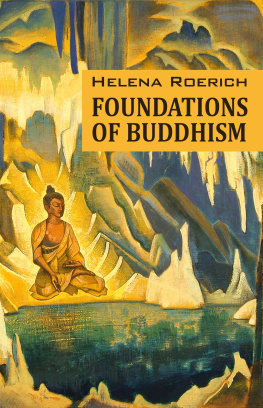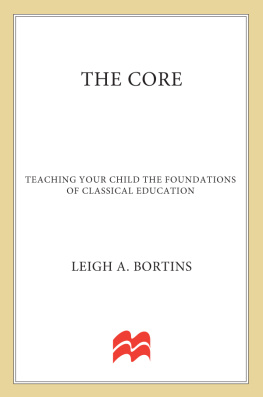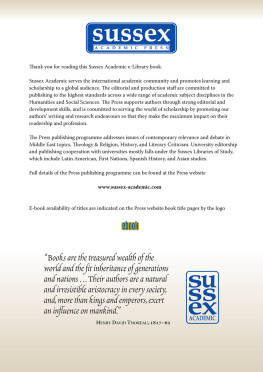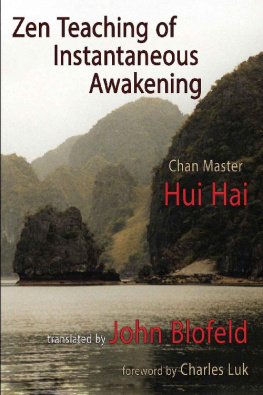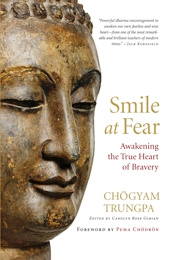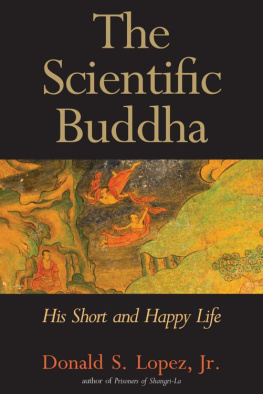
Agni Yoga Society, Inc., New York
www.agniyoga.org
1971 by Agni Yoga Society.
First published in 1930 by Roerich Museum Press under the pseudonym Natalie Rokotoff.
Second edition 1971.
Reprinted November 2016.
Cover illustration: Nicholas Roerich. Buddha, the Conqueror . 1925
FOREWORD
The Great Gotama gave to the world a complete Teaching of the perfect construction of life. Each attempt to make a god of the great revolutionist, leads to absurdity.
Previous to Gotama there was, of course, a whole succession of those who bore the common welfare, but their teachings crumbled to dust in the course of millenniums. Therefore the Teaching of Gotama should be accepted as the first teaching of the laws of matter and the evolution of the world.
Contemporary understanding of the community permits a wondrous bridge from Gotama Buddha up to the present time. We pronounce this formula neither for extolling nor for demeaning, but as an evident and immutable fact.
The law of fearlessness, the law of the renunciation of property, the law of the evaluation of labor, the law of the dignity of human personality, beyond castes and outer distinctions, the law of true knowledge, the law of love based upon self-knowledge, make of the covenants of the Teachers a continuous rainbow of the joy of humanity.
Let us construct the foundations of Buddhism in its manifested covenants. The simple Teaching, equal in beauty to the Cosmos, will dispel every suggestion of idolatry, unworthy of the great Teacher of men.
Knowledge was the leading path of all great Teachers. Knowledge will permit a free and vital approach to the great Teaching, as vitally real as is great Matter itself.
We shall not introduce the latest complexities; we shall speak briefly about those foundations that cannot be denied.
Joy to all peoples! Joy to all those who labor!

FOUNDATIONS OF BUDDHISM
In the foundations of Buddhism, one cannot pause over the later complications and ramifications. It is important to know that the idea of the purification of the Teaching is always alive in the Buddhist consciousness. Soon after the Teachers death the celebrated councils took place in Rajagriha, and after in Vaishali and Patna, restoring the Teaching to its original simplicity.
The principal existing schools of Buddhism are: the Mahayana (Tibet, Mongolia, the Kalmucks, the Buriats, China, Japan, Northern India) and the Hinayana (Indo-China, Burma, Siam, Ceylon, and India). But both of these schools remember equally well the qualities of the Teacher himself.
The qualities of Buddha are: Munithe wise, from the clan of Shakya; Shakya SimhaShakya, the Lion; Bhagavatthe Blessed One; Sadhuthe Teacher; Jinathe Conqueror; the Ruler of the Benevolent Law.
Of unusual beauty is the coming of the King in the image of a mighty mendicant. Go, ye mendicants, bring salvation and benevolence to the peoples. In this command of Buddha, in this term mendicants all is contained.
Understanding the Teaching of Buddha, you realize whence emanates the assertion of the BuddhistsBuddha is a man. His teaching of Life is above all and every prejudice. The temple does not exist for him, but there is a place of assembly and a home of knowledgethe Tibetan du-khang and tsug-lag-khang.
Buddha disputed the conventional conception of God. Buddha denied the existence of an eternal and immutable soul. Buddha gave the teaching for every day. Buddha struggled forcefully against possessions. Buddha fought personally against the fanaticism of castes and the privileges of the classes. Buddha affirmed experienced, trustworthy knowledge and the value of labor. Buddha bade the study of the life of the Universe in its full reality. Buddha laid the foundations of the community, foreseeing the victory of the World Community.
Hundreds of millions of worshippers of Buddha are scattered throughout the world and each of them affirms: I take refuge in the Buddha, I take refuge in the Teaching, I take refuge in the Sangha.
The Buddhist written traditions and our contemporary researches have established a series of details of the life of Gotama Buddha. Buddhas death is ascribed by some of the investigators to the year 483 B.C. According to Singhalese chronicles, Buddha lived from 621 to 543 B.C. But Chinese chronicles have fixed the birth of Buddha in the year 1024 B.C. The age of the Teacher at his death is given as about eighty years. The place of the birth of the Teacher is known as Kapilavastu, situated in the Nepalese Terai. The royal line of Shakyas, to which Gotama belonged, is known.
Undoubtedly all biographies of the great Teacher have been greatly elaborated by his contemporaries and followers, especially in the most recent writings, but in order to preserve the coloring and the character of the epoch, we must to a certain extent refer to the traditional exposition.
According to the traditions of the sixth century B.C. the domain of Kapilavastu existed in North India in the foothills of the Himalayas and was populated by numerous tribes of Shakyas, descendants of Ikshvaku of the solar race of Kshatriyas. They were ruled by the Elder of the clan who resided in the city of Kapilavastu, of which no traces are now left; during Buddhas time it was already destroyed by a hostile neighboring king. At that period, Shuddhodana, the last direct descendant of Ikshvaku, reigned at Kapilavastu. Of this king and Queen Maya was born the future great Teacher, who received the name of Siddhartha, which meansHe who fulfilled his purpose.
Visions and prophecies preceded his birth and the event itself, on the full-moon day of May, was attended with all propitious signs in heaven and on earth. Thus the great Rishi Asita dwelling in the Himalayas, having learned from the Devas that a Bodhisattva, the future Buddha, had been born to the world of men in the Lumbini Park and that he would turn the Wheel of the Doctrine, immediately set out on a journey to pay homage to the future Teacher of men. Reaching the palace of King Shuddhodana, he expressed the desire to see the newborn Bodhisattva. The King ordered the child to be brought to the Rishi, expecting his blessing. But the Rishi on seeing the child, first smiled and then wept. The King anxiously asked the reason of his sorrow and whether he saw an ill omen for his son. To this the Rishi replied that he saw nothing harmful for the child. He rejoiced because the Bodhisattva would achieve full enlightenment and become a great Buddha; and he grieved because his own life was short and he would not live to hear the great Doctrine preached.
Queen Maya, after giving birth to the great Bodhisattva, departed life, and her sister Prajapati took the child and reared it. In Buddhist history she is known as Buddhas first female disciple and the foundress and head of a Sangha for bhikshunis.
On the fifth day, one hundred and eight Brahmins, versed in the Vedas, were invited by King Shuddhodana to his palace. They were to give a name to the newborn Prince and read his destiny by the position of the luminaries. Eight of the most learned said: He who has such signs as the Prince will become either a Universal Monarch, Cakravartin, or, if he retires from the world, will become a Buddha and remove the veil of ignorance from the sight of the world.
The eighth, the youngest, added, The Prince will leave the world after seeing four signs: an old man, a sick man, a corpse and an anchorite.
The King, desiring to retain his son and heir, took all measures and precautions to assure this. He surrounded the Prince with all the luxuries and pleasures which his royal power could afford. There are many facts indicating that the Prince Siddhartha received a brilliant education, since knowledge as such was in great esteem in those days, and according to a remark in the
Next page
